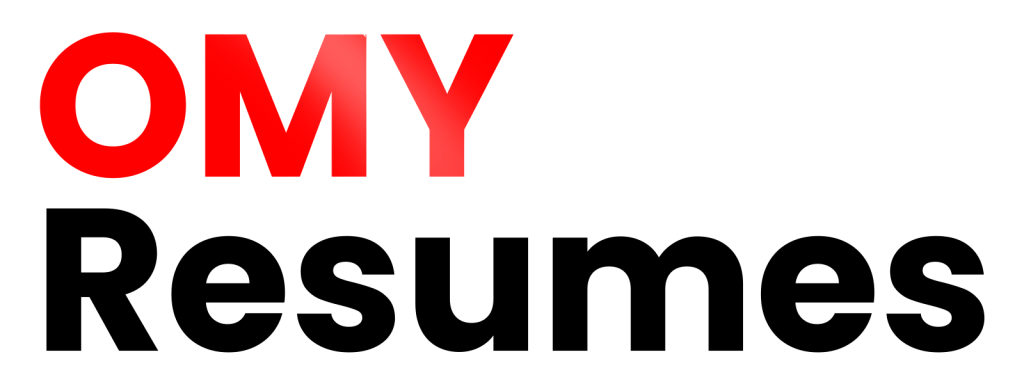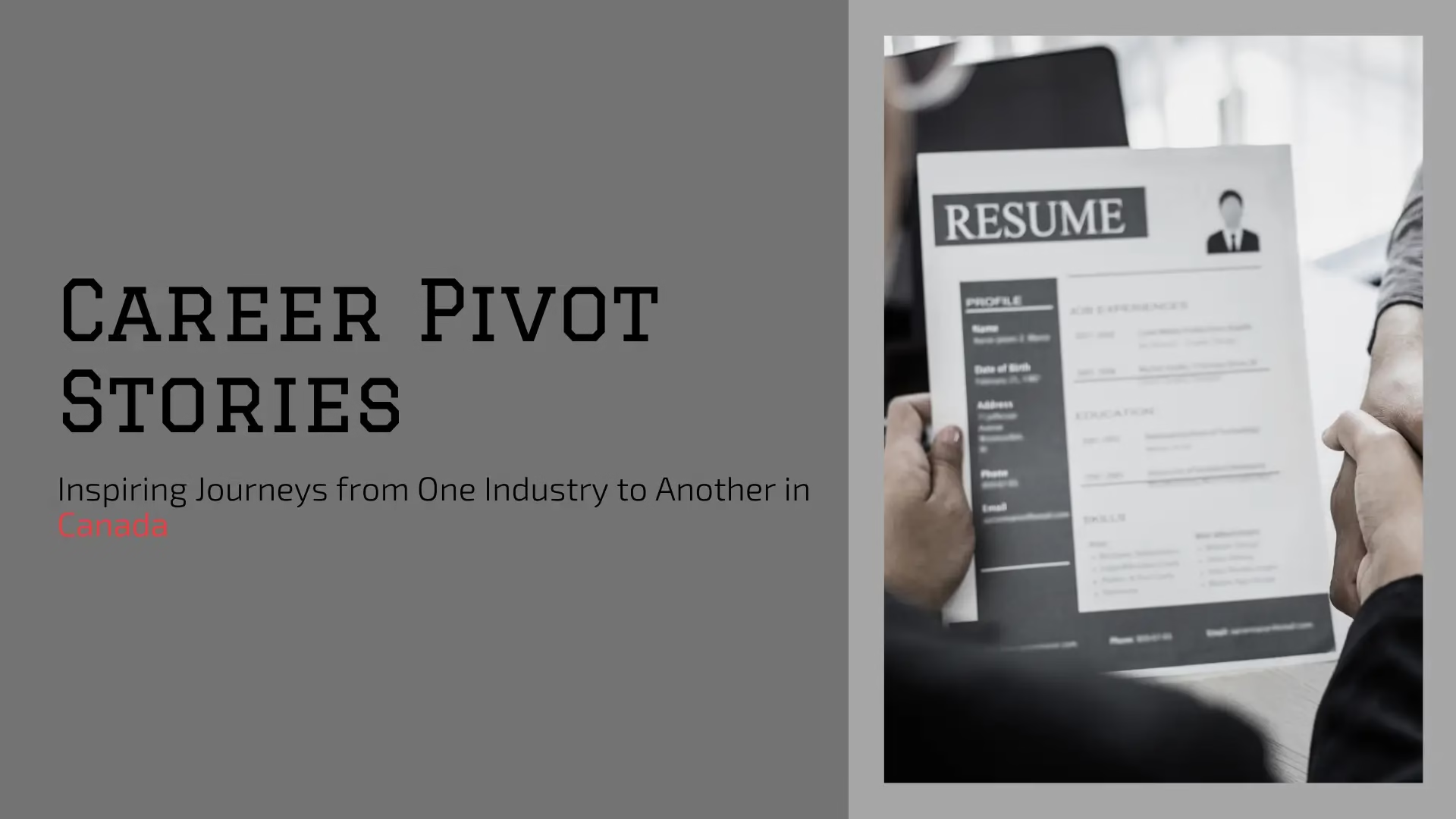Introduction
In today’s fast-evolving job market, career pivots have become more common than ever, especially in Canada. Whether driven by automation, industry decline, or personal aspirations, Canadians are exploring new professional avenues that better align with their skills and goals. But pivoting careers isn’t as simple as updating a LinkedIn profile; it requires strategic planning, targeted resumes, and a clear understanding of transferable skills.
At OMY Resumes, we specialize in guiding professionals through these transitions. In this blog, we explore real-life career pivot stories, providing actionable insights and strategies for Canadians seeking change. From IT professionals moving into project management to nurses transitioning into healthcare administration, these case studies reveal the keys to a successful career transformation in 2025’s competitive landscape.
Understanding Career Pivots in Canada
What is a Career Pivot?
A career pivot involves moving from one industry or role to a different one, often leveraging transferable skills. Unlike a simple job change, a pivot may require new training, certifications, or strategic resume adjustments to appeal to hiring managers in a new sector.
Why It Matters in Canada:
- Diverse economy: Cities like Toronto, Vancouver, and Calgary offer opportunities across IT, Healthcare, Finance, and Engineering.
- Job market evolution: AI and automation are reshaping roles, creating new opportunities for skillful professionals.
- Flexibility: Employers increasingly value adaptable employees who can bring fresh perspectives.
Key Trends Driving Career Pivots
- Digital Transformation: Businesses are adopting AI, cloud computing, and automation, opening doors for tech-savvy professionals.
- Healthcare Expansion: Canada’s aging population has increased demand for healthcare administrators and specialized roles.
- Remote Work & Flexibility: More professionals are exploring roles that align with lifestyle preferences, not just skill sets.
Common Challenges in Career Pivots
- ATS Rejections: Applicant Tracking Systems can flag resumes that don’t match industry keywords.
- Skill Gaps: Some career pivots require additional certifications or training.
- Career Narrative: Explaining why you switched industries can be challenging.
- Networking: Entering a new industry often means building connections from scratch.
IT Specialist to Project Manager
Background: John, a Toronto-based IT specialist, wanted to move into project management to leverage his technical expertise and organizational skills.
Strategy:
- Resume Services Toronto: He worked with OMY Resumes to craft an ATS-friendly resume highlighting leadership in IT projects.
- LinkedIn Optimization: Updated profile to showcase project management certifications and team leadership.
- Actionable Tip: Focus on transferable skills like team coordination, budgeting, and deadline management.
Outcome: John secured a project manager role in a leading Toronto tech company within three months.
Registered Nurse to Healthcare Administrator
Background: Emily, an experienced nurse from Vancouver, sought a role in healthcare administration.
Strategy:
- Highlighted management experience in clinical settings.
- Developed an industry-specific resume emphasizing operational and compliance knowledge.
- Leveraged to understand administrative roles.
Outcome: She became a healthcare coordinator, overseeing hospital operations.
Even clinical roles can translate into administrative competencies when presented effectively.
Finance Analyst to Data Science
Background: Raj, a finance analyst in Calgary, wanted to enter the booming field of data science.
Strategy:
- Undertook data science courses and obtained certifications.
- Optimized resume with AI resume techniques and relevant keywords.
- Used to showcase projects.
Outcome: Landed a data scientist position in a fintech startup.
Tip: Certifications and demonstrable projects significantly boost credibility in tech pivots.
Successful Career Pivot
- Self-Assessment: Identify strengths, interests, and transferable skills.
- Industry Research: Understand demand, trends, and salary expectations.
- Skill Gap Analysis: Determine certifications, training, or courses required.
- Resume Revamp: Create an ATS-friendly resume tailored to the new industry.
- Cover Letter Writing: Explain your pivot compellingly; see
- LinkedIn Profile Optimization: Highlight pivot rationale and skills.
- Networking: Join industry-specific groups, attend Canadian job fairs, and connect with professionals.
- Interview Preparation: Practice explaining your pivot; utilize.
Common Mistakes to Avoid
- Generic Resumes: Avoid sending the same resume across industries.
- Ignoring Soft Skills: Leadership, problem-solving, and communication are universal.
- Lack of Networking: Connections often make or break career pivots.
- Underestimating ATS: Ensure resumes include industry-specific keywords.
Resume Trends 2025 for Career Pivoters
- AI Resumes: Tailored content for ATS and automated hiring systems.
- Concise Storytelling: Highlight achievements that translate to new roles.
- LinkedIn Integration: Seamlessly link profiles and portfolios.
- Visual Portfolios: Especially for tech and creative pivots.
Expert Tips for LinkedIn Optimization
- Headline Matters: Include new target role, e.g., “Aspiring Project Manager | IT Specialist | Toronto.”
- Summary Section: Explain pivot story clearly and concisely.
- Recommendations: Request endorsements from past colleagues highlighting transferable skills.
Canadian Job Market Insights for 2025
- Toronto: Tech, finance, and creative industries dominate.
- Vancouver: Healthcare, IT, and environmental sectors growing.
- Calgary: Energy, tech, and finance.
- Montreal: Tech startups and healthcare innovation.
Statistical Highlight: According to, demand for healthcare administrators and tech project managers is expected to grow by 15% over the next five years.
Strategies to Enhance Transferable Skills
- Volunteering: Gain experience in new sectors.
- Freelancing: Demonstrates initiative and skill applicability.
- Micro-Certifications: Quick courses can bridge gaps in knowledge.
Industry-Specific Resume Tips
- IT: Emphasize project leadership, cloud certifications, coding projects.
- Healthcare: Highlight patient care management, compliance, and administrative skills.
- Finance: Showcase analytical skills, budgeting, and data management.
- Engineering: Include technical projects, safety compliance, and cross-functional teamwork.
Leveraging Career Consultation Canada
A career consultation helps pivoters:
- Identify the right target industry.
- Develop a customized job search strategy.
- Access insider tips for interviews and resumes.
Explore for personalized guidance.
Interview Preparation for Career Pivots
- Anticipate Pivot Questions: “Why are you changing industries?” Prepare a concise, positive story.
- Highlight Transferable Skills: Relate past experience to new role.
- Practice STAR Method: Situation, Task, Action, Result for examples.
Creating a Personal Brand for a Pivot
- Consistent Messaging: Across resume, LinkedIn, and portfolio.
- Content Sharing: Post industry insights on LinkedIn.
- Professional Networking: Attend seminars and Canadian job expos.
Mini-Case Study: Marketing Executive to UX Designer
Background: Lisa, a Montreal marketing executive, transitioned to UX design.
Strategy:
- Completed UX courses and obtained certification.
- Developed portfolio showcasing redesign projects.
- Updated resume emphasizing user research and project management.
Outcome: Hired as a UX designer for a leading Canadian e-commerce company.
Leveraging AI Tools in Career Pivots
- ChatGPT for Resumes: Drafts industry-optimized resumes and cover letters.
- Skill Assessment Tools: Identify strengths and gaps.
- Automated Networking Suggestions: Find LinkedIn connections in target industries.
Actionable Checklist for Career Pivot Success
- Assess transferable skills and interests.
- Research Canadian job market trends.
- Obtain certifications if needed.
- Create ATS-friendly, industry-specific resumes.
- Develop compelling cover letters.
- Optimize LinkedIn profile.
- Build a portfolio (if applicable).
- Network actively in new industry.
- Prepare for interviews.
- Consider professional coaching and consultation.
Conclusion
Career pivots in Canada are increasingly achievable with strategic planning, the right resources, and professional guidance. Whether you’re moving from IT to project management, healthcare to administration, or finance to data science, the key is to highlight transferable skills, tailor your resume and LinkedIn profile, and prepare for

